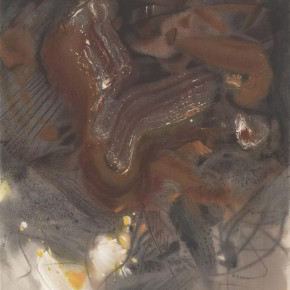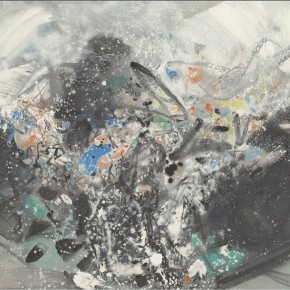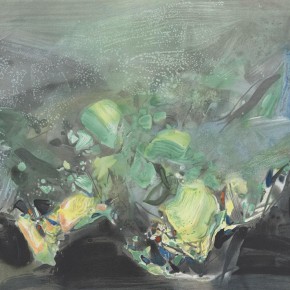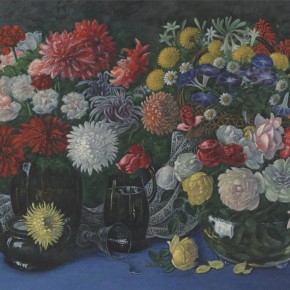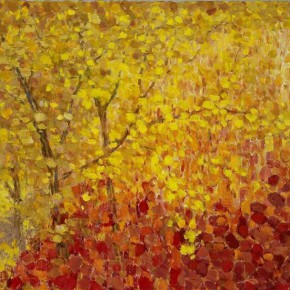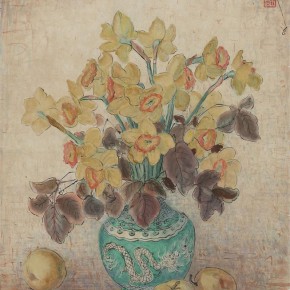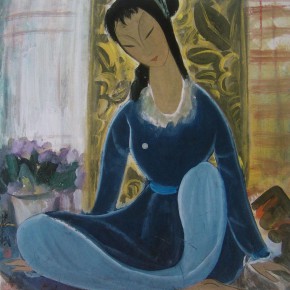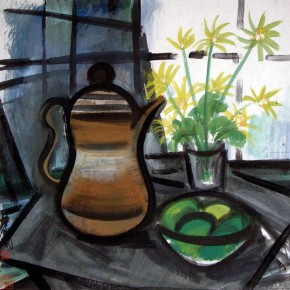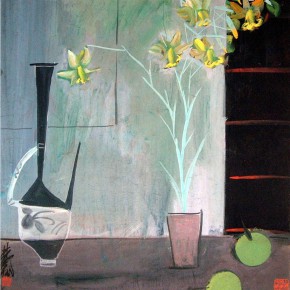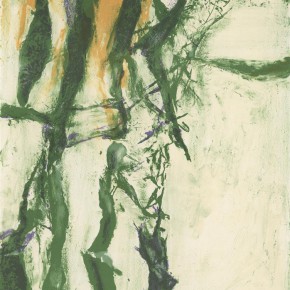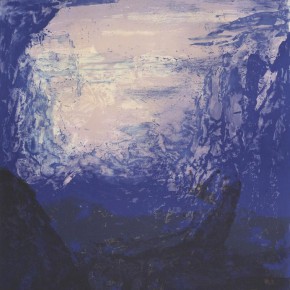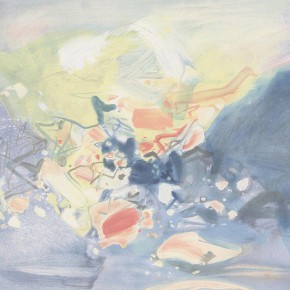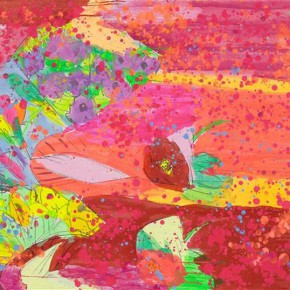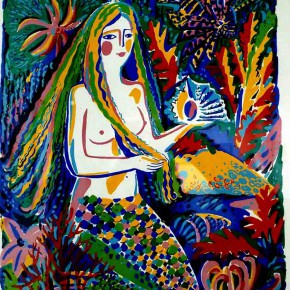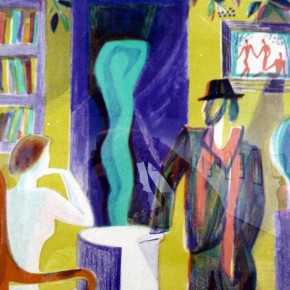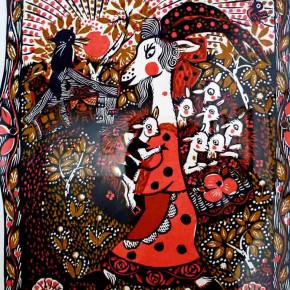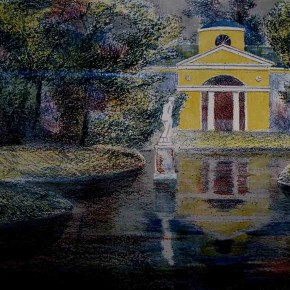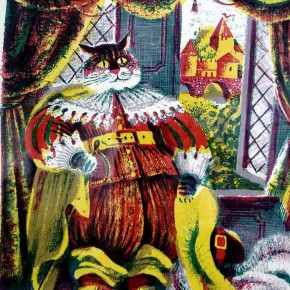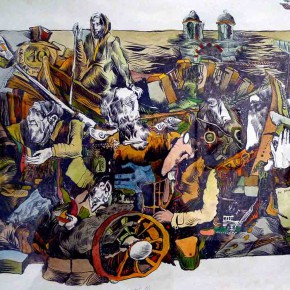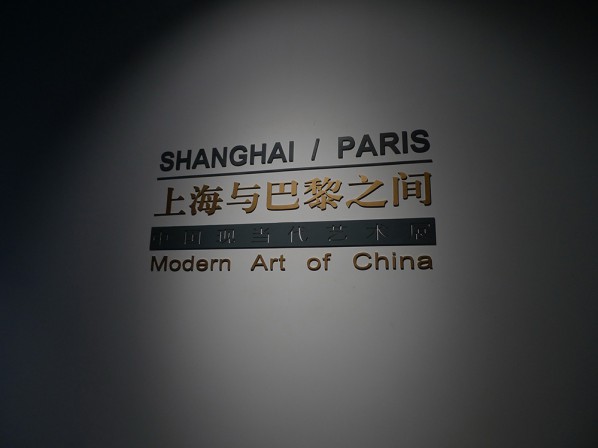
Shanghai/Paris – Modern Art of China is on display at China Art Palace in Shanghai, which will be on view until May 30, 2014. The exhibition serves as an important exhibition project for the first anniversary of China Art Palace, and it is supported by the Shanghai Academy of Chinese Painting, Shanghai Oil Painting & Sculpture Institute, Liu Haisu Museum, Shanghai Artists Association, etc., especially Galerie Cinquini, How Art Museum, artists and collectors provide their artworks, a total of 250 pieces of domestic and international art boutiques are on display, covering Chinese paintings, oil paintings, prints, sculpture, watercolors, drawings, as well as more than research literature and discourses, basically covering important achievements in Western and Eastern artistic communication since the 20th century.
Based on the background of Western and Eastern cultural exchange, intrinsic spirit and the temperature of Shanghai art that gradually formed in the last century serving as the core, formal and expressive paintings that was led and advocated by Lin Fengmian serving as a clue, “Shanghai /Paris – Modern Art of China” showcases that Chinese art has experienced several ups and downs in the evolution of time since its birth going through to the development, as well as new artistic powers that generate from the contemplation of globalized culture. The exhibition is divided into three chapters including “Masters and Friends”, “Starting from Shanghai”, “Globalized Power”, showcasing the works of an active group of outstanding artists who lived in Shanghai or Paris in the 20th century until now, initially revealing the art association between Shanghai and Paris through a Western and Eastern cultural comparative study, which inspires the audience and expects a more profound future for Eastern and Western civilizations.
Part I: Masters and Friends
The 20th century was a magnificent era when new thoughts emerged, surging and converging. In the East and West, it constructed a cultural proposition of the era by an unprecedented collision and fusion, while a modern artistic development clue ran through the mutual study and research. It mainly studies Lin Fengmian, who studied with Yancesse, Fernand Anne Piestre Cormon when in France which benefited from the backbone of academic painting including Besnard, Flameng, Dagnan Bouveret, and became teachers and friends with modern art masters, such as Crodo, he laid the foundation for building the road of Chinese modern art. After returning to China, Lin Fengmian established two important national art schools by using the original version of école nationale supérieure des Beaux-arts de Paris. Committing to the artistic idea of the integration of the West and East with the approach of formalism, which deeply influenced the art lives of his students including Zhao Wuji, Wu Guanzhong, Chu Teh-chun, etc., giving this “form” an artistic meaning of “modern” that made Chinese art acquire a worldwide reputation.
Part II: “Starting from Shanghai”
In the first half of the 20th century, a group of Chinese artists with lofty ideals started in Shanghai to study Western painting in Paris, some were admitted to art academies for formal training, some directly faced original works by visiting and study, following that they successively returned to China, promoting Western knowledge and paintings in various ways such as teaching, exhibitions, organizations, articles, comprehensively practicing the pursuit of the integration of Chinese and Western art, building up a picture of the first generation of Chinese modern art. It was under the influence of this thought, thus studying painting abroad became a major pathway for Chinese art circles to find self-innovation in the 20th century. As the base for generations of artists starting to study aboard and returning for practice, Shanghai was always at the forefront of the development of Chinese modern art, not only recorded the harbinger of the modernism art, but also showcased the gesture of drawing from the West and blended it into Chinese art, reflecting both its shape and function.
After the reform and opening up, a more open art thought gave birth to Chinese artists’ critiques or reflections of inherent culture in the new era, once again through a lot of copying of Western paintings, they explored Western ways, holding the banner of integration of Chinese and Western arts as well as diverse creative practices, and reflecting a confidence, flexible and calm temperament that derived from stepping in between them. It is on display in Hall 9.
Part III: Globalized Power
Since the 1990s, globalized culture has increasingly become a consensus. Chinese art is gradually brought into an international context, a group of Chinese artists with creative visions of globalization, began to travel between China, Europe and the United States, applying their own individual way carrying a feature of “China” to create a globalized cultural power. This power doesn’t only promote the modernist art to a more conceptual contemporary context, but also the original position and tension that was vaguely laid in the contraposition and tension of the “oversea” and “local” is gradually shifted to the positive and direct interactive process. It becomes more and more necessary, adding diverse aspects to Eastern and Western cultural issues, covering multi-dimensional viewing angles and the possibility of interpretation, also converting multidimensional conceptual languages and cultural paradigms, providing a more comprehensive visual experience for putting art into the public eye. This chapter is exhibited in Hall 8 and the gallery.
Translated by Chen Peihua and edited by Sue/CAFA ART INFO


